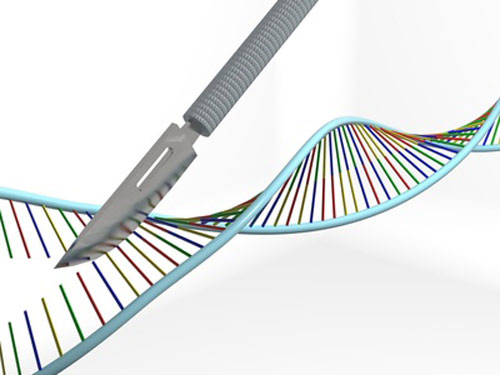Researchers from the University of California-San Francisco and the Blood Systems Research Institute have used CRISPR/Cas genome editing technology to correct disease-causing mutations in cells from patients with beta-thalassemia.
The team published its study (“Seamless gene correction of β-thalassemia mutations in patient-specific iPSCs using CRISPR/Cas9 and piggyBac”) in Genome Research.
Beta-thalassemia results from inherited DNA mutations in the hemoglobin beta (HBB) gene, resulting in reduced HBB expression in red blood cells and, in the most severe forms, anemia. The only established curative treatment is hematopoietic stem cell transplantation. However, this treatment requires a matched donor.
Gene therapy, which delivers a corrected copy of a gene into patient cells, could bypass the need for a donor. Previous attempts using a virus to randomly insert a normal gene into the genome has been successful in one beta-thalassemia patient, but the long-term effect of viral insertion is not yet known.
To correct HBB mutations directly in a patient's genome, researchers first generated induced pluripotent stem cells (iPSCs) from skin cells of patients. The scientists say the real advance came when they applied CRISPR/Cas9 to precisely engineer a double strand DNA break at the HBB locus in these cells, allowing a donor plasmid with the corrected sites to be efficiently integrated, thus replacing the mutated sites.
The donor plasmid also contained selectable markers to identify cells with corrected copies of the gene. These selectable markers were subsequently removed with transposase and a second round of selection, generating a seamless, corrected version of HBB in the patient's genome.
“We used the latest gene-editing tool, CRISPR/Cas9 technology, combined with the piggyBac transposon to efficiently correct the HBB mutations in patient-derived iPSCs without leaving any residual footprint,” wrote the investigators. “No off-target effects were detected in the corrected iPSCs, and the cells retain full pluripotency and exhibit normal karyotypes. When differentiated into erythroblasts using a monolayer culture, gene-corrected iPSCs restored expression of HBB compared to the parental iPSCs line. Our study provides an effective approach to correct HBB mutations without leaving any genetic footprint in patient-derived iPSCs, thereby demonstrating a critical step toward the future application of stem cell-based gene therapy to monogenic diseases.”
However, the research team pointed out, much work is needed before these cells could be transplanted back into a patient for treating beta-thalassemia.
“Although we and others are able to differentiate iPSCs into blood cell progenitors as well as mature blood cells, the transplantation of the progenitors into mouse models to test them has so far proven very difficult,” said senior author Yuet Wai Kan, Ph.D., from UC-San Francisco. “I believe it will take quite a few more years before we can apply it in a clinical setting.”






